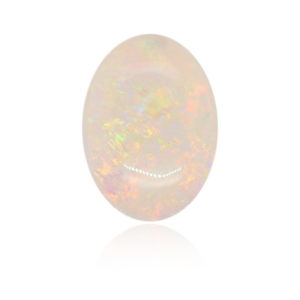Australia has long been the largest supplier of precious opal in the world, but with the last decade seeing an influx of hyrdophane opal from Ethiopia, this could be pushing the need to review the classification system for opal.
The current opal nomenclature (the term or terms applied to someone or something) was agreed on over two decades ago, pre-dating the discovery of the Ethiopian opal fields, and therefore hydrophane opal is classed the same as solid natural Australian opal – Type 1.
Due to the inconsistency of classifying opal in gem labs around the world, a new opal guidebook has been proposed, which will use guidance and industry knowledge gathered from the Australian Opal industry, in collaboration with the Australian Opal Association and the Gemological Association of Australia to produce a new opal classification.
Basically, there will be a more defined way to differentiate between the groups within the opal family, based on certain principles.
Ultimately, a universal classification system for opal will help prevent fraudulent behaviour (sellers not disclosing synthetic opal has been a concern) and misrepresentation, as well as instilling confidence in ALL types of opal for the consumer.
Eight categories have been proposed in this new opal classification, and they, in turn are further broken down into different types and varieties.
Each of these categories will be (and have been) broken down further, but to keep things simplified for now, we provided a more summarised version of each.
Natural Precious Solid Opal (with play of colour) – Precious Black, Crystal or White Opal, ‘Fire’ Opal etc
Natural Precious Opal on Host Rock (with play of colour) – this is Boulder Opal
Natural Precious Opal in Host Rock (Matrix) (with play of colour) – opal matrix much like is found in the Winton, Yowah, Koroit fields etc
Natural (Precious or Common) Hydrophane Opal (with or without play of colour) – absorbent opal (ie Ethiopian material)
Natural Common Opal (without play of colour) – generally referred to as Potch and Colour
Treated Opal – Any natural opal that has been treated in any away apart from cutting and polishing (ie. treated Andamooka Matrix, treated Welo Opal etc)
Composite Opal – Doublets, Triplets, Mosaics, Inlay etc
Synthetic or Imitation Opal – Man made material that simulates or resembles natural opal.
This new nomenclature is hoped to provide consistency and confidence within the industry AND with the consumers, and for now, while it has been endorsed by the World Jewellery Confederation, we have to wait for worldwide acceptance.
Information sourced from the article – ‘Proposal for revised classification system for opal’ – Cheryl D. Harty
Jewellery World Magazine
Published September 2018


